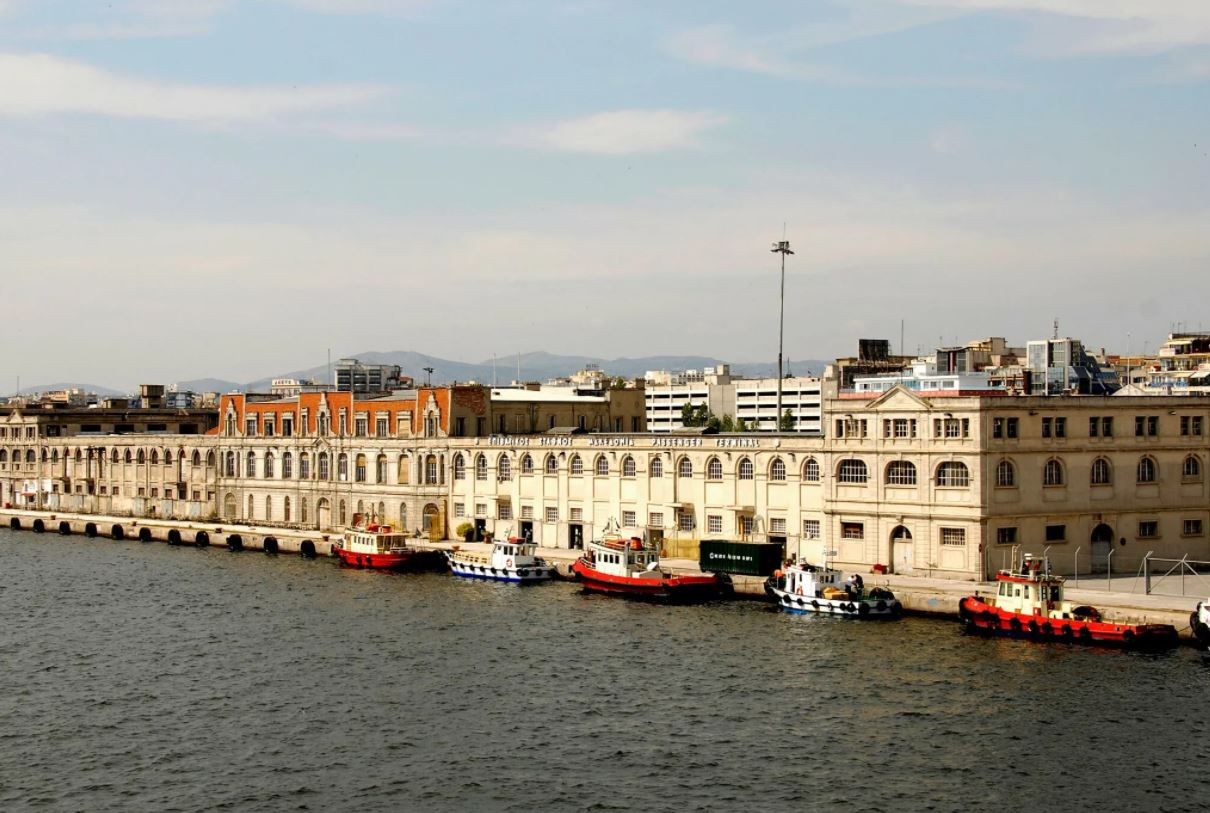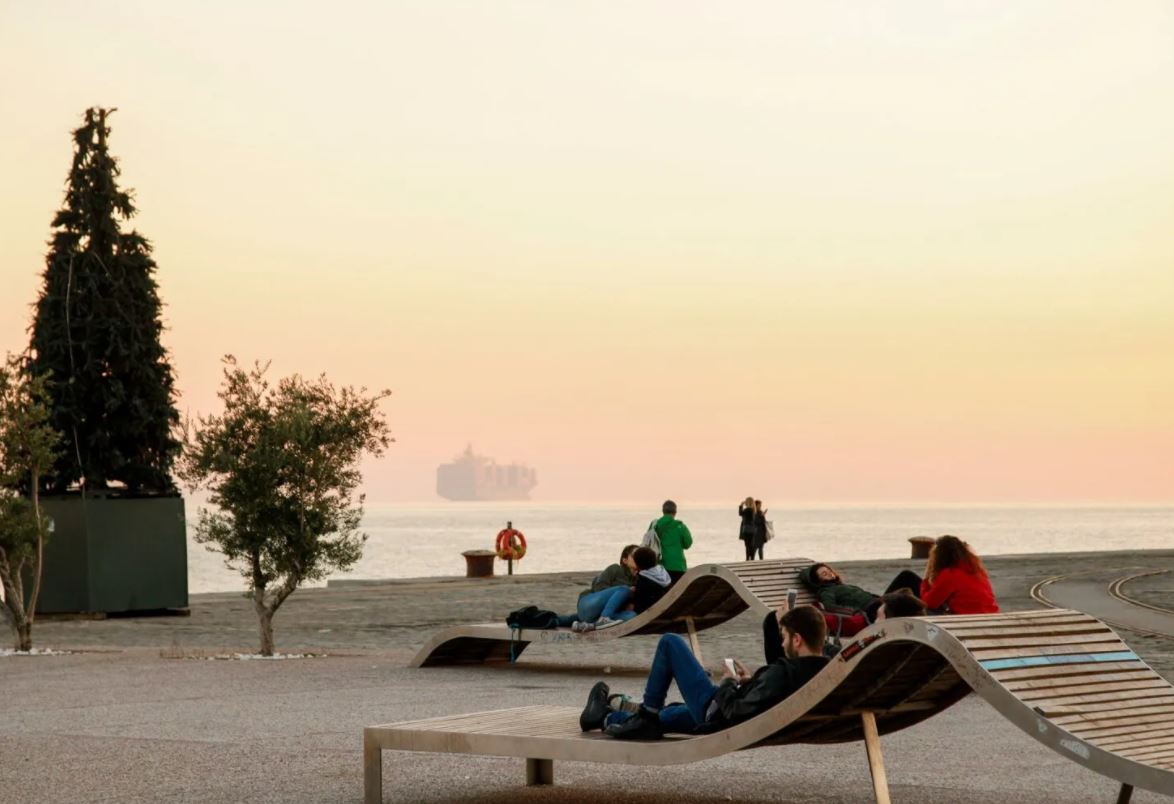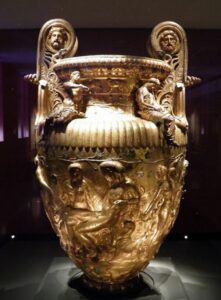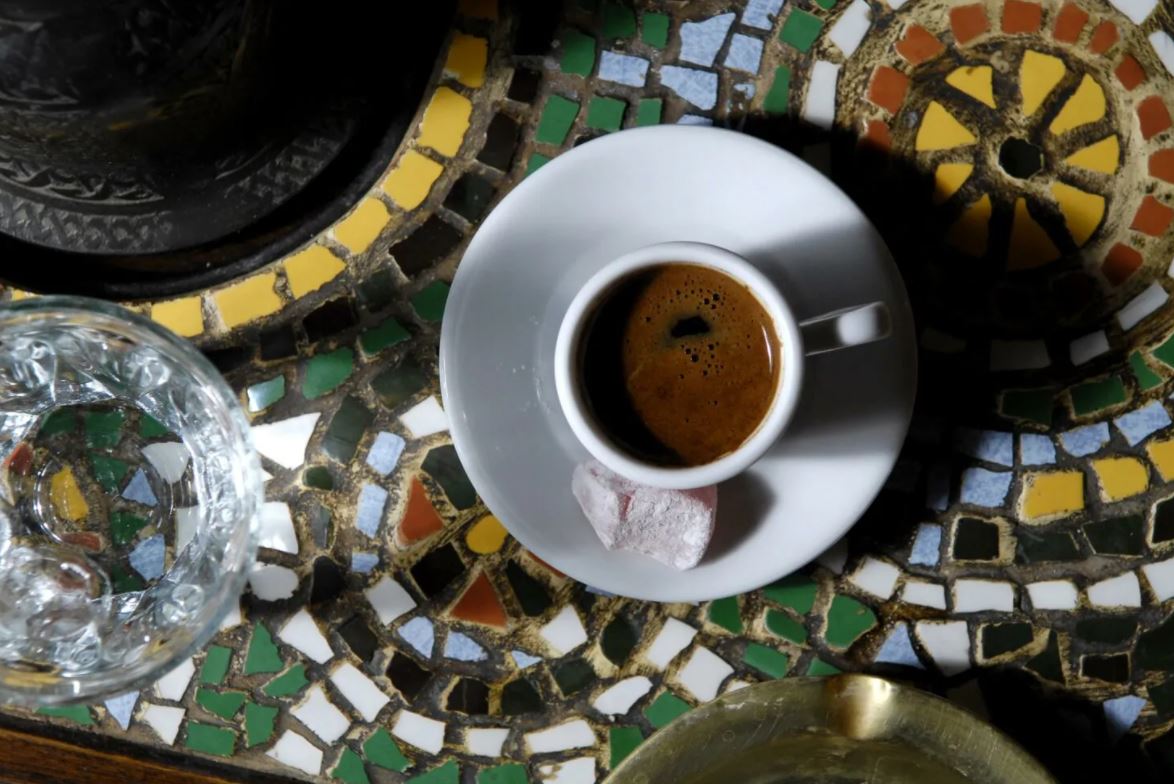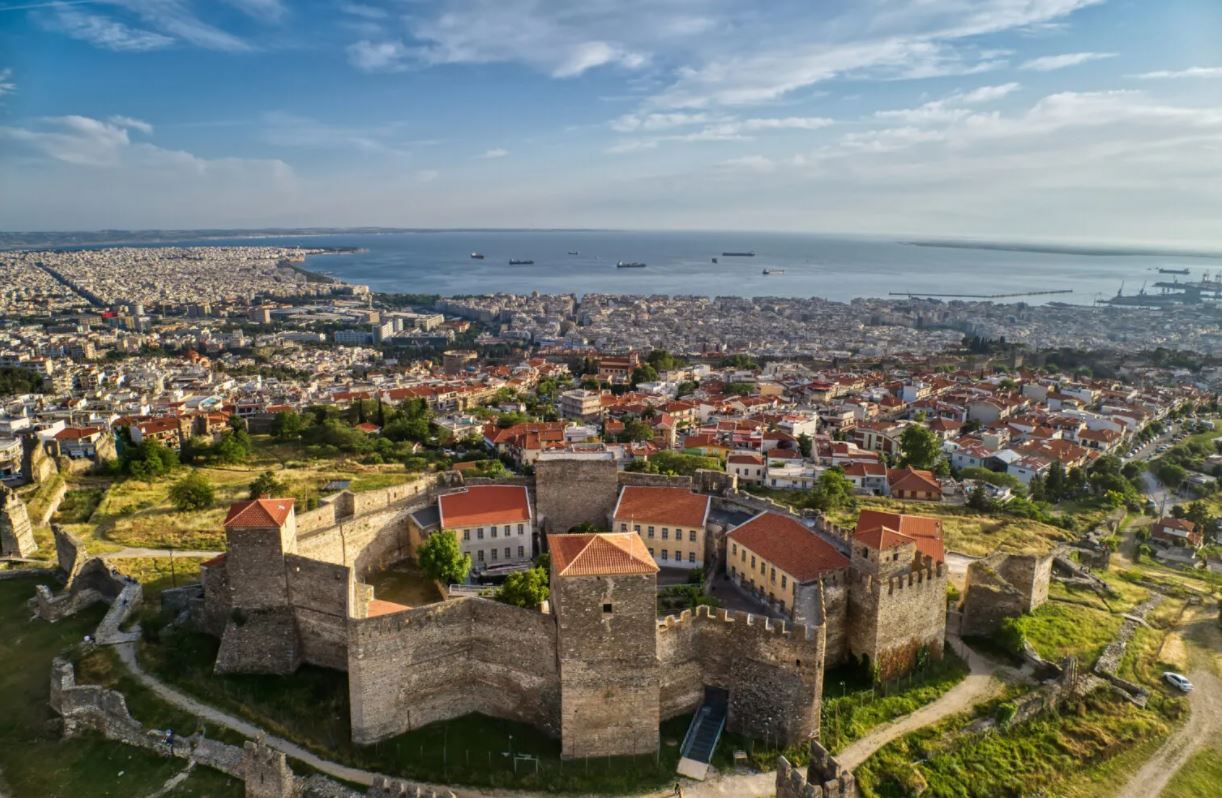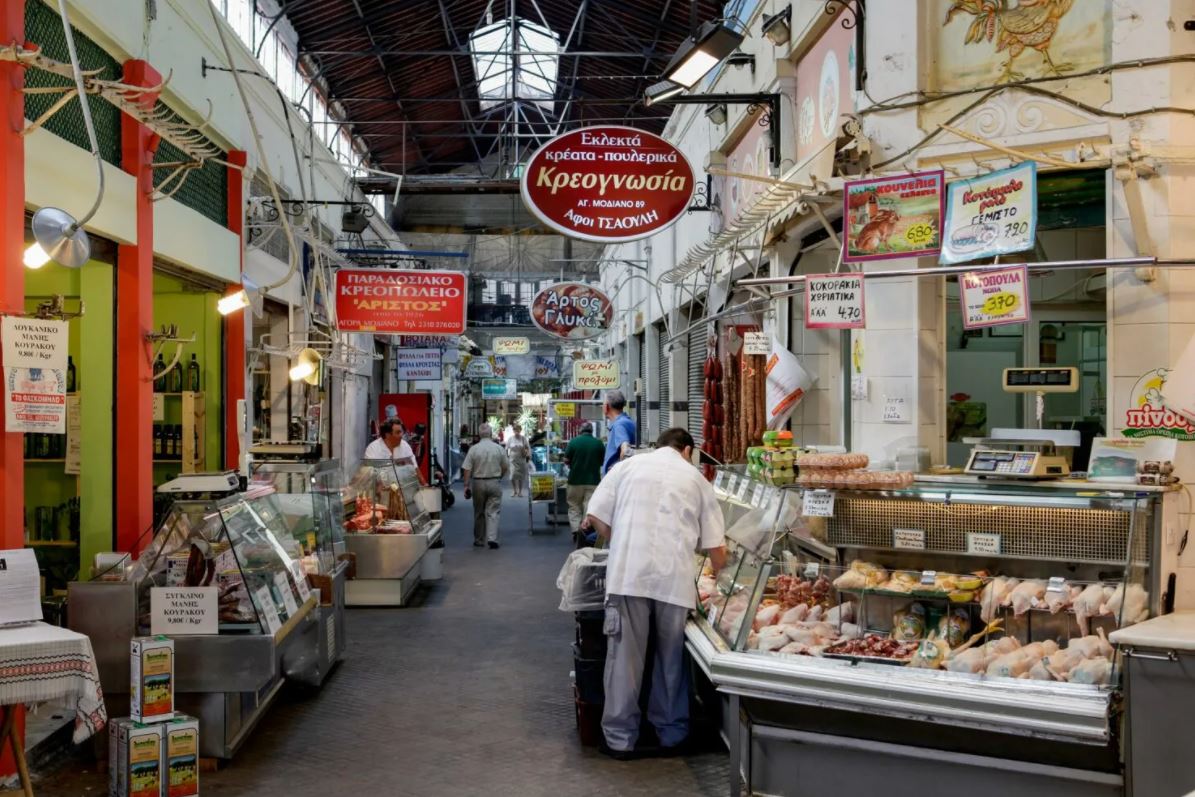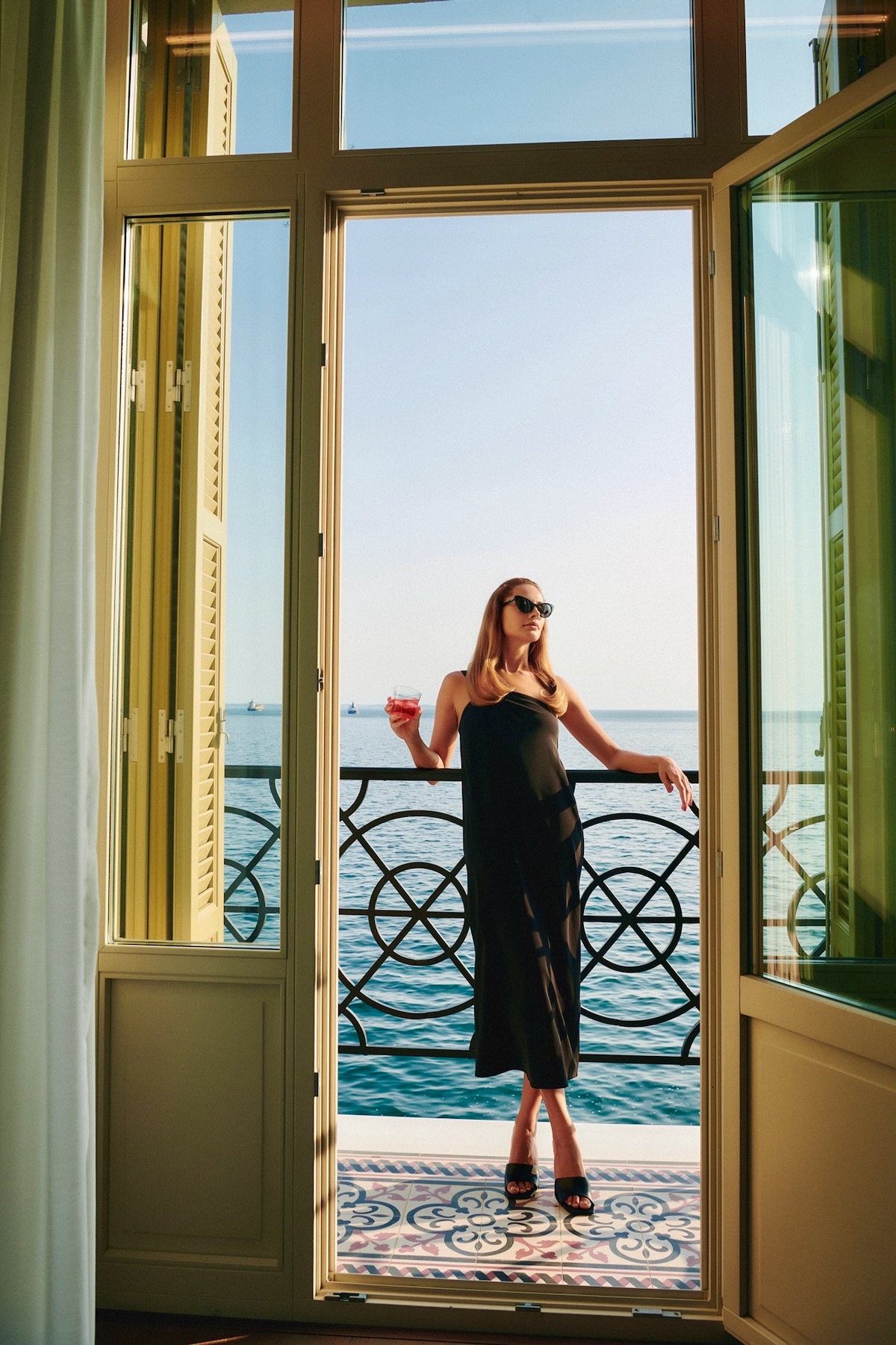A tour of the historic city, the capital of the synonymous prefecture, with magnificent Byzantine monuments
Thessaloniki, in perpetual exchange with Mount Olympus and within close proximity of the Halkidiki peninsula, its seaside continuation, is a place you can never get enough of.
Thessaloniki carries dense history and, at the same time, rich, concentrated beauty, the key aspects of this appeal being the sea at the city’s fore, surrounding mountain, and the authenticity of the people. Everything is carried in the city’s unusual mix – entertainment, culture, gastronomy, and so much more. We will seek to offer a definitive picture of the city through four favourite routes covering the bustling city centre, the beauty of Nea Paralia, the revamped promenade area, the Archaeological and Byzantine Museums, and, naturally, Ano Poli, the atmospheric old town at an elevated level in the northern section of the city.
The city centre with a 3,000-year history
The heart of the city features lovely mansions that have been spared of the city’s modern-era reconstruction, as well as adorable narrow alleys with well-kept secrets awaiting exploration and discovery. Don’t miss the opportunity to take a look around the Kapani market, an experience that will help you fully align with the beat of the city. At the market benches, sample the olives, cheese and full-flavoured pickled products. If you enjoy taking photographs, there is plenty of colour and unique charm to capture at this market. The fruit and vegetables on display create their own palette, which, besides the aesthetic appeal, are a tantalising view.
Try the seafood and assorted meze dishes at one of the tavernas in the area. Mydopilafo (mussel pilaf), grilled sardines, grilled red peppers, Agioritiki (Mouth Athos-style) eggplant salad, saganaki (fried cheese), and, naturally, wines produced by the region’s winemakers should all be tried. The new-generation retsina wines (white, resinated) made by regional winemakers in recent years are also recommended. Then head straight for some armenonville, a dessert associated with the history of the city, at a pint-sized and lovely confectionary store of the same name, Armenonville (102 Mitropoleos, tel. +30 2310525112).
Nea Paralia, the revamped promenade area, a city landmark
The revamped promenade area, Nea Paralia, representing the city’s modern, minimalist side, is the heartbeat of the city. This area, where the seaside area and urban network meet, could also be described as a magical coastline that connects the medieval White Tower and the modern Megaro Mousikis concert hall. A visit to the City Museum, housed at the White Tower, will help provide a clearer picture on Thessaloniki’s multilayered and dense history. It is from this point, also the easternmost edge of the Byzantine city walls, that the city spills over into its modern reality. A walk around the promenade area has it all – romantics, rebellious teenagers, creative artists, lively skateboarders, athletes. It is an established area for the outings of all, a popular strolling route during the morning hours, with the concert hall at its end, while also featuring a legendary landmark, the Makedonia Palace hotel. From this tall building, the sunset at Mount Olympus, about 80km southwest of Thessaloniki, combined with the beauty of the Thermaic Gulf, provides sheer relaxation. Take in the views of surrounding buildings, which, through their modern design, nod towards the future of a city that is, at once, old and new. Enjoy a classy cocktail from this point in the city, where design meets history.
Archaeological and Byzantine Museums
These museums promise potent experiences whose strength, alone, would suffice to transform this city into a cultural destination. Museum visitors, from history experts to beginners, keep returning, becoming enthusiasts. Be careful not to lose yourself amid the enormous number of artefacts on display. Move with efficiency. Select and enjoy ten artefacts from each of the two museums. Surrender to their beauty, discover their depth, and simply promise yourself that you will be back.
At the archaeological museum, begin with its star attraction, the masterful Derveni Krater, an elaborately crafted vase for mixing undiluted wine with water. It is decorated with motifs glorifying the joy of life. These include the divinities Dionysus, Ariadne, maenads and nymphs in ecstatic dances, as well as a taste of the intensity of Hellenistic life. Also view a lovely mosaic floor depicting Dionysus and Ariadne, which was discovered at a mansion in the city centre. Its shades of colour celebrate the glory of art and creativity through thousands of microscopic pieces. Don’t skip the singular Aravissos Hoard, an assemblage of six gold artefacts dating back to approximately 4000 BC. It declares, amongst other things, the ability of certain individuals, from as early as Neolithic times, to acquire personal prestige items, which sometimes accompanied their owners to their burial sites.
At the Museum of Byzantine Culture, view the ceramic vases, whispering stories from everyday life during the Byzantine era.
Ano Poli, the old town, at an elevated spot
Leaving the coastal area behind, head to the northern section of the city, Ano Poli, the old town, at an elevated spot. The glory of the past is apparent throughout the old town and is intensified while walking alongside the old city walls, towers, gates and battlements. Such features serve to remind that this city was the second most important of the entire Byzantine Empire. The best time to visit Ano Poli is during sunset. At this time, the view down towards the Thermaic Gulf is special. The sunset colours transform the old city walls into something truly magical, highlighting, in a unique way, the traditional Macedonian architecture preserved at dozens of houses. Elements of this tradition include sachnisia, bay windows projecting outward from the main walls of houses and buildings, lively colours and narrow alleys. Make sure you reach as far as the Heptapyrgion, popularly known as Yedi Kule, an impressive Byzantine fortress with ten towers – despite its name, suggesting seven – at the northeastern corner of the old city walls.
In the late 19th century, the Heptapyrgion was converted to a prison and served as such for numerous decades. For many years now, it has been undergoing restoration work, but is already hosting cultural events. Also in Ano Poli, visit the 14th century Vlatades Monastery, a UNESCO world heritage site. This purely Byzantine monastery features impressive, inspired murals, representing what became known as the Thessaloniki School. The monastery continued to flourish during the Ottoman period. Outside, at the monastery garden, enjoy viewing the peacocks as they fan out their feathers to attract prospective partners.
For a culinary taste of Ano Poli, head to Yedi, an ouzeri-taverna with a welcoming atmosphere that serves authentic cuisine prepared with eclectic food products and ingredients from northern Greece’s entire Macedonian region. It is hidden at the end of a street, well off the beaten track, making the spot a lovely surprise, once discovered.
Thessaloniki, a temptress of a city that unveils itself slowly to visitors, eventually finds a spot deep in the heart.
.



